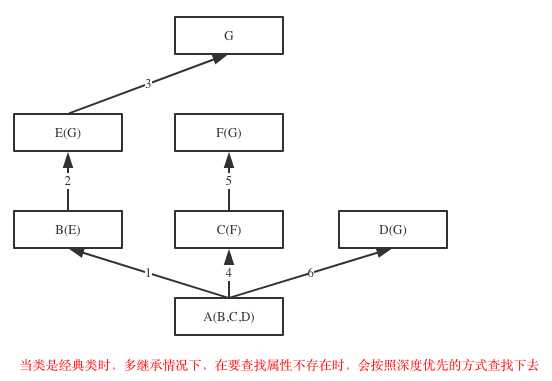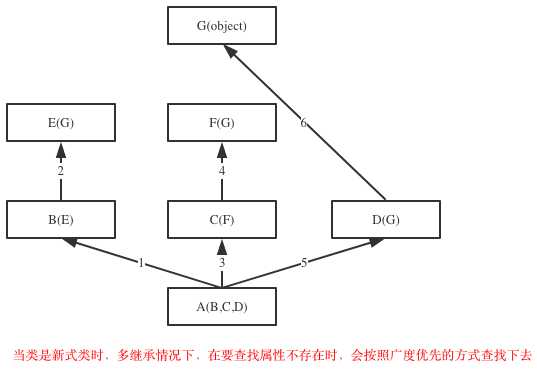标签:形式 list 过程 div src error: 简写 nim lis
目录
继承就是新建一个类的方式,新建的类我们叫子类,被继承的类称为父类
在现实生活中,子女继承了父母的基因,遗产,所以子女会拥有父母的部分特征
而在python中,子类继承父类就是子类完全拥有父类所具备的属性及技能
比如我现在定义一个动物类,这个动物类拥有名字,身高,体重
然后我再定义一个人类,这个人也有名字,身高,体重再加其他的属性技能
我再定义一个狗类,也有名字,身高,体重再加其他的属性技能
class Animal:
def __init__(self,name,height,weight):
self.name = name
self.height = height
self.weight = weight
class People:
def __init__(self,name,height,weight,age):
self.name = name
self.height = height
self.weight = weight
self.age = age
class Dog:
def __init__(self,name,height,weight,color):
self.name = name
self.height = height
self.weight = weight
self.color = colorclass Animal:
def __init__(self,name,height,weight):
self.name = name
self.height = height
self.weight = weight
class People(Animal):
def __init__(self,name,height,weight,age):
Animal.__init__(self,name,height,weight)
self.age = age
class Dog(Animal):
def __init__(self,name,height,weight,color):
Animal.__init__(self,name,height,weight)
self.color = color所以类的继承可以减少代码的冗余
__bases__可以获得对象继承的类print(People.__bases__)
print(Dog.__bases__)(<class '__main__.Animal'>,)
(<class '__main__.Animal'>,)在Python3中如果一个类没有继承任何类,则默认继承object类
在Python2中如果一个类没有继承任何类,不会继承object类
print(Animal.__bases__)(<class 'object'>,)class Foo:
def f1(self):
print('Foo.f1')
def f2(self):
print('Foo.f2')
self.f1() # 此时的self.f1()代表了obj.f1()
class Bar(Foo):
def f1(self):
print('Bar.f1')
# 对象查找属性的顺序:对象自己-》对象的类-》父类-》父类。。。
obj = Bar() # self是obj本身,即找到Bar的f1()
obj.f2()Foo.f2
Bar.f1派生:子类中新定义的属性的这个过程叫做派生,并且需要记住子类在使用派生的属性时始终以自己的为准
直接访问某一个函数,这种方式与继承无关
class Animal:
def __init__(self,name,height,weight):
self.name = name
self.height = height
self.weight = weight
class People:
def __init__(self,name,height,weight,age):
Animal.__init__(self,name,height,weight)
self.age = age # 派生
class Dog(Animal):
def __init__(self,name,height,weight,color):
super().__init__(name,height,weight)
self.color = color # 派生严格以来继承属性查找关系
super()会得到一个特殊的对象,该对象就是专门用来访问父类中的属性的(按照继承的关系)
super().__init__(不用为self传值)
super的完整用法是super(自己的类名,self),在python2中需要写完整,而python3中可以简写为super()
上面的Dog就是使用了方法二来进行的
类的组合就是某一个类的对象具有一个属性,该属性的值指向另一个类的对象
优点:用来解决类与类之间代码的冗余
# 定义课程类
class Course:
def __init__(self,name,period,price):
self.name = name
self.period = period
self.price = price
def tell_info(self):
print("""
课程名:%s
课程周期:%s
课程价钱:%s"""%(self.name,self.period,self.price))
# 定义成员共有属性
class OldBoyPeople:
school = 'oldboy'
def __init__(self,name,age,gender):
self.name = name
self.age = age
self.gender = gender
# 定义老师类
class OldBoyTeacher(OldBoyPeople):
def __init__(self,name,age,gender,level):
super().__init__(name,age,gender)
self.level = level
def score(self,student,num):
print(f'老师{self.name}为{student.name}的<{student.course.name}>课程打了{num}分')
# 定义学生类
class OldBoyStudent(OldBoyPeople):
def __init__(self,name,age,gender,stu_id):
super().__init__(name,age,gender)
self.stu_id = stu_id
def choose_course(self,course):
self.course = course
print(f'{self.name}选择了<{course.name}>课程')# 创建课程
python = Course('Python全栈开发','6个月',25000)
python.tell_info() 课程名:Python全栈开发
课程周期:6个月
课程价钱:25000linux = Course('Linux运维','6个月',20000)
linux.tell_info() 课程名:Linux运维
课程周期:6个月
课程价钱:20000# 创建老师
tec = OldBoyTeacher('hades',27,'male',1)
print(tec.__dict__){'name': 'hades', 'age': 27, 'gender': 'male', 'level': 1}# 创建学生
stu = OldBoyStudent('Bonnie',16,'female','00001')
print(stu.__dict__){'name': 'Bonnie', 'age': 16, 'gender': 'female', 'stu_id': '00001'}stu.choose_course(python)
stu.course.tell_info()Bonnie选择了<Python全栈开发>课程
课程名:Python全栈开发
课程周期:6个月
课程价钱:25000tec.score(stu,98)老师hades为Bonnie的<Python全栈开发>课程打了98分在python中子类可以继承多个父类,如A(B,C,D)
如果继承关系为非菱形结构,则会按照(B,C,D)的顺序依次寻找,如果找不到就会报错
菱形继承就是子类同时继承多个父类,而多个父类又同时继承了同一个父类
这样就会有一个查找顺序的问题,属性查找顺序有两种:


class G:
def test(self):
print('from G')
class E(G):
def test(self):
print('from E')
class F(G):
def test(self):
print('from F')
class D(G):
def test(self):
print('from D')
class C(F):
def test(self):
print('from C')
class B(E):
def test(self):
print('from B')
class A(B,C,D):
def test(self):
print('from A')
obj = A()我们可以通过__mro__算法进行打印查找顺序
print(A.__mro__)(<class '__main__.A'>, <class '__main__.B'>, <class '__main__.E'>, <class '__main__.C'>, <class '__main__.F'>, <class '__main__.D'>, <class '__main__.G'>, <class 'object'>)for i in A.__mro__:
print(i)<class '__main__.A'>
<class '__main__.B'>
<class '__main__.E'>
<class '__main__.C'>
<class '__main__.F'>
<class '__main__.D'>
<class '__main__.G'>
<class 'object'>为了实现继承,python会在MRO列表上从左到右开始查找基类,直到找到第一个匹配这个属性的类为止。
而这个MRO列表的构造是通过一个C3线性化算法来实现的。我们不去深究这个算法的数学原理,它实际上就是合并所有父类的MRO列表并遵循如下三条准则:
子类会先于父类被检查
多个父类会根据它们在列表中的顺序被检查
如果对下一个类存在两个合法的选择,选择第一个父类
多态指的是一类事物具有多种形态,即一个抽象的类具有多个子类,因而多态的概念依赖于继承
class Animal:
def communicate(self): # 子类约定俗称的必须实现这个方法
print('动物类会交流')
class People(Animal):
def communicate(self):
print('人类通过语言交流')
class Dog(Animal):
def communicate(self):
print('狗通过"汪汪汪"进行交流')
class Pig(Animal):
def communicate(self):
print('猪通过"哼哼哼"进行交流')peo1 = People()
dog1 = Dog()
pig1 = Pig()
peo1.communicate()
dog1.communicate()
pig1.communicate()人类通过语言交流
狗通过"汪汪汪"进行交流
猪通过"哼哼哼"进行交流但是总有人不遵守规则,想搞例外,所以我们可以通过@abc.abstractmethod方法进行强制要求,如果子类没有这个功能则会报错
import abc
class Animal(metaclass=abc.ABCMeta):
@abc.abstractmethod
def communicate(self): # 子类约定俗称的必须实现这个方法
print('动物类会交流')
class People(Animal):
def communicate(self):
print('人类通过语言交流')
class Dog(Animal):
def communicate(self):
print('狗通过"汪汪汪"进行交流')
class Pig(Animal):
# def communicate(self):
# print('猪通过"哼哼哼"进行交流')
pass
peo2 = People()
peo2.communicate()
dog2 = Dog()
dog2.communicate()
pig2 = Pig() # 报错
人类通过语言交流
狗通过"汪汪汪"进行交流
---------------------------------------------------------------------------
TypeError Traceback (most recent call last)
<ipython-input-76-4c019fadd2e5> in <module>
23 dog2 = Dog()
24 dog2.communicate()
---> 25 pig2 = Pig() # 报错
TypeError: Can't instantiate abstract class Pig with abstract methods communicate多态性是指具有不同功能的函数可以使用相同的函数名,这样就可以用一个函数名调用不同内容的函数。在面向对象方法中一般是这样表述多态性:向不同的对象发送同一条消息,不同的对象在接收时会产生不同的行为(即方法)。也就是说,每个对象可以用自己的方式去响应共同的消息。所谓消息,就是调用函数,不同的行为就是指不同的实现,即执行不同的函数。
def func(obj):
obj.communicate()
func(peo1)
func(dog1)
func(pig1)人类通过语言交流
狗通过"汪汪汪"进行交流
猪通过"哼哼哼"进行交流func(peo2)
func(dog2)人类通过语言交流
狗通过"汪汪汪"进行交流综上可以说,多态性是一个接口(函数func)的多种实现(如obj.communicate())
增加了程序的灵活性:以不变应万变,不论对象千变万化,使用者都是同一种形式去调用,如func(animal)
增加了程序额可扩展性:通过继承Animal类创建了一个新的类,使用者无需更改自己的代码,还是用func(animal)去调用
标签:形式 list 过程 div src error: 简写 nim lis
原文地址:https://www.cnblogs.com/Hades123/p/11061331.html